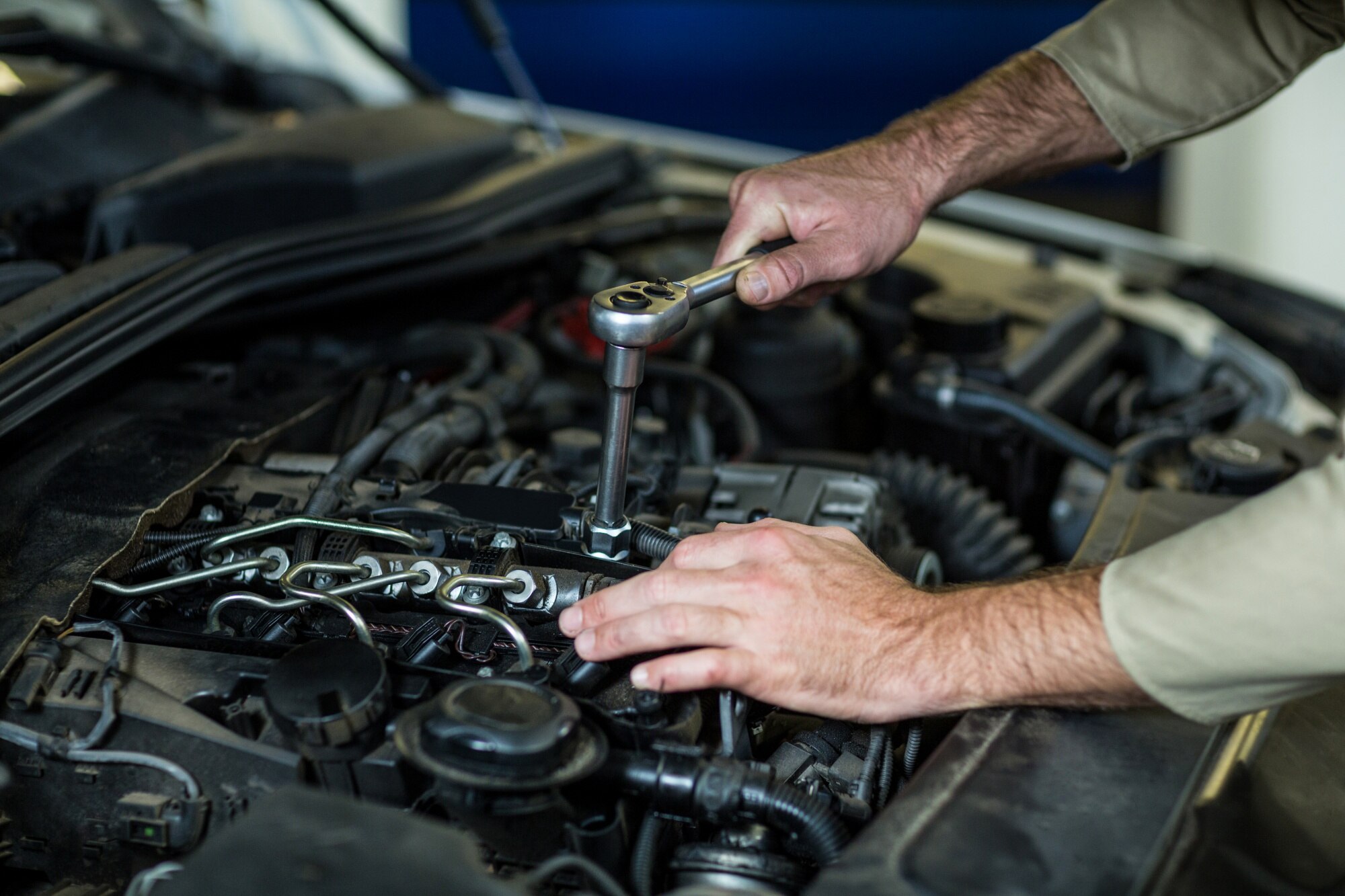A dead car battery can be a real inconvenience. It can leave you stranded, disrupt your plans, and potentially lead to costly repairs.
But what if there was a way to breathe new life into that dead battery?
This is a question many car owners find themselves asking. Can you restore a dead car battery?
The answer is not as straightforward as you might think. It depends on several factors, including the type of battery, its age, and the cause of its failure.
In this article, we will delve into the world of car batteries. We’ll explore what it means for a battery to be ‘dead’, the signs of a failing battery, and the difference between a flat and a truly dead battery.

We’ll also provide a step-by-step guide on how to restore a dead car battery, if it’s feasible. We’ll discuss the tools you’ll need, the safety precautions to take, and the methods to use.
Whether you’re a seasoned DIY enthusiast or a car owner looking to learn more about your vehicle’s maintenance, this guide is for you. Let’s get started.
Understanding Car Battery Health
Car batteries are the heart of your vehicle’s electrical system. They provide the power needed to start the engine and run the electrical components.
Understanding the health of your car battery is crucial. It can help you prevent unexpected breakdowns and extend the life of your battery.
There are different types of car batteries, including lead-acid, AGM (Absorbent Glass Mat), and lithium-ion. Each type has its own characteristics and restoration possibilities.
Here are some factors that can affect your car battery’s health:
- Temperature: Extreme cold or heat can affect battery performance.
- Short trips: Frequent short trips can prevent the battery from fully charging.
- Electronic devices: Leaving devices plugged in when the car is off can drain the battery.
- Alternator issues: A faulty alternator can lead to battery drain.
Signs of a Failing Car Battery
Recognizing the signs of a failing car battery can save you from unexpected trouble. Here are some symptoms to watch out for.
The most obvious sign is difficulty starting the engine. If the engine cranks slowly or not at all, it could be a battery issue.
Other signs include dim headlights, a weak horn, or electrical components not working properly. These can indicate a lack of power from the battery.
Finally, physical signs on the battery itself, such as corrosion or swelling, can indicate a problem. Always inspect your battery regularly for any visible damage.
The Difference Between Flat and Dead Batteries
It’s important to distinguish between a flat battery and a dead battery.
A flat battery has been drained of power but can often be recharged. This can happen if you leave your lights on or if there’s a fault in the charging system.
A dead battery, on the other hand, cannot hold a charge. This is often due to age or damage. In some cases, a dead battery can be restored, but in others, replacement is the only option.
Safety First: Precautions Before Restoration
Before attempting to restore a dead car battery, safety should be your top priority. Car batteries contain sulfuric acid, which is highly corrosive and can cause severe burns.
Always wear protective gear, including gloves and safety glasses. Work in a well-ventilated area to avoid inhaling harmful fumes.
Avoid smoking or using open flames near the battery. Batteries produce hydrogen gas, which is highly flammable.
Tools and Materials You’ll Need
To restore a dead car battery, you’ll need some specific tools and materials.
Here’s a list of items you’ll need:
- Safety glasses and gloves
- Distilled water
- Baking soda
- A toothbrush or wire brush
- A battery charger
- A multimeter
- A hydrometer (for lead-acid batteries)
Having the right tools at hand will make the process smoother and safer. Always ensure you’re using tools and materials that are suitable for your specific battery type.
Step-by-Step Guide to Restoring a Dead Car Battery
Restoring a dead car battery involves several steps. It’s important to follow these steps in order to ensure the best possible outcome.
Here’s a general outline of the process:
- Cleaning the battery terminals
- Checking the battery voltage
- Recharging and reconditioning the battery
Let’s delve into each step in more detail.
Cleaning Battery Terminals
The first step in restoring a dead car battery is cleaning the terminals. Dirty or corroded terminals can hinder the battery’s performance.
Use a mixture of baking soda and water to clean the terminals. Apply the mixture with a toothbrush or wire brush, then rinse with distilled water.
Checking Battery Voltage
Next, check the battery voltage using a multimeter. A healthy car battery should read around 12.6 volts when fully charged.
If the voltage is significantly lower, the battery may be dead or severely discharged. In this case, it will need to be recharged or reconditioned.
Recharging and Reconditioning
Recharging a dead car battery involves using a battery charger. Connect the charger to the battery and allow it to charge until it reaches its full capacity.
Here are the steps to follow:
- Connect the charger to the battery terminals.
- Set the charger to the correct voltage and amperage.
- Allow the battery to charge until it reaches its full capacity.
The Role of Distilled Water
Distilled water plays a crucial role in maintaining and restoring a car battery. It’s used to refill the battery cells, which can help restore the battery’s capacity.
If the water level in the battery cells is low, refill them with distilled water. Be careful not to overfill the cells, as this can cause the battery to leak.
Equalization Charge
An equalization charge is a process that can help restore a dead car battery. It involves charging the battery at a higher voltage to remove sulfate crystals from the battery plates.
This process can help restore the battery’s capacity and extend its lifespan. However, it should only be performed under the guidance of a professional, as it can potentially damage the battery if done incorrectly.
Desulfation Process
Desulfation is another method that can potentially restore a dead car battery. It involves using a desulfator device to break down sulfate crystals on the battery plates.
This process can help restore the battery’s capacity and extend its lifespan. However, it’s important to note that not all batteries can be successfully desulfated, and the process may not always be successful.
When Restoration Isn’t an Option
Despite your best efforts, not all dead car batteries can be restored. This can be due to severe damage, age, or other factors that affect the battery’s performance.
In such cases, it’s important to consider other options. These may include recycling the battery, disposing of it properly, or replacing it with a new one.
Remember, safety should always be your top priority. If you’re unsure about the condition of your battery, consult a professional.
Proper Disposal and Recycling
Car batteries contain harmful chemicals that can be dangerous if not handled properly. Therefore, it’s crucial to dispose of them in a responsible manner.
Many auto parts stores and recycling centers accept old car batteries for recycling. They can safely handle and dispose of the battery, preventing any harm to the environment.
Considering Replacement and Costs
When restoration isn’t an option, replacement becomes necessary. The cost of a new car battery can vary depending on the type and brand.
While the upfront cost may be higher, a new battery can provide peace of mind. It can also improve your vehicle’s performance and reliability, making it a worthwhile investment.
Maintaining Your Car Battery’s Health
Maintaining your car battery’s health is crucial for its longevity. Regular maintenance can prevent your battery from dying prematurely and save you from unexpected breakdowns.
A well-maintained battery not only ensures a reliable start but also supports the vehicle’s electrical systems. It’s an integral part of your vehicle’s overall health.
Here are some key aspects of car battery maintenance:
- Regular testing
- Keeping the battery clean
- Ensuring proper charging
- Avoiding unnecessary drain
Regular Testing and Maintenance
Regular testing can help detect any potential issues early. It’s recommended to test your car battery every six months.
A multimeter can be used to check the battery voltage. If it’s below 12.4 volts, it may need charging or replacement.
Extending Battery Life: Tips and Tricks
There are several ways to extend the life of your car battery. These include:
- Avoiding short trips: Short trips can prevent the battery from fully charging, leading to a shorter lifespan.
- Keeping the battery clean: Dirt and corrosion can cause the battery to discharge faster.
- Limiting the use of electronics when the engine is off: Using electronics like the radio or air conditioner when the engine is off can drain the battery.
- Regular maintenance: Regular testing and cleaning can help maintain the battery’s health and extend its life.
Conclusion: The Verdict on Restoring Dead Car Batteries
Restoring a dead car battery can be a practical and cost-effective solution, especially for those willing to invest time and effort. However, it’s important to remember that not all batteries can be restored. The success of the restoration largely depends on the battery’s condition and the type of damage it has sustained.
In conclusion, while restoring a dead car battery is possible, it’s not always the best option. Regular maintenance and proper care can prevent a battery from dying prematurely, making restoration unnecessary. Always consult a professional if you’re unsure about the process or the battery’s condition.







